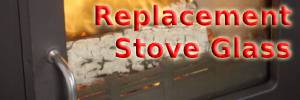QLocal would like to thank Burscough's George Clandon for this moving story of his uncle George Lawson. We have purposely published it a week after Remembrance Sunday to give it the attention it deserves.
'This true story has been a long time in the telling, namely because of the emotion it stirs and the utter horror of the events that took place at the time.
George Lawson was the uncle I never met, He hailed from Burscough, a small canalside village in Lancashire. He was born at the start of the First World War and was the eldest of seven children; George had two other younger brothers, Jack and Freddie along with his four sisters, Vera, Mary, Elsie and Lilly.
Their parents, Mary - or May as she liked to be called - and Harry (or Henry) Lawson, lived at number 9 Victoria Street in the village, adjacent to the Leeds Liverpool canal. This was a three bedroom terraced house that also housed the two grandparents George Georgeson, his wife Ethel, the parents of May, and a small child called Linda.
With one outside toilet and a washhouse attached to the house, George's mother and grandmother would take in other people's washing to try and make ends meet.
The family where predominantly barge people, going back to the early part of the 20th century, plying their trade delivering rope and coal from Wigan to Liverpool docks, in and around the time of the Great War. Wheat from the docks would be transferred to the flour mills situated along the Leeds Liverpool canal for the production of flour.
George Lawson was a very popular boy when he was growing up. He matured into a big strapping lad, who was a very keen sportsman, playing cricket and football for the village teams. He acquired a nickname of 'Snubby' after receiving a broken nose, due no doubt to playing sport, or some other activity.
George loved his family and the peaceful village life, but events where unfolding that were dramatically going to change his way of life and everyone else's in Great Britain.
It was 1938; Germany was showing definite signs of aggression, George decided to join the Royal Navy before he was conscripted, he was 23 years of age. He travelled to Plymouth to HMS Drake, trained as an engineer - more commonly known as a stoker. Other young men who could see the obvious did the same and became regular servicemen, the obvious was less than two years away, WW2.
In the spring of 1939, he made a very brave decision, and volunteered for the submarine service, transferring to Portsmouth and training at the submarine training base at HMS Dolphin, Gosport in Hampshire, wildly known in those day's as 'Fort Blockhouse'. He completed his training on the 29th September 1939, joining HMS Narwhal at the port town of Immingham on the East Coast, which was the small base of the submarine squadron for North Sea operations.
War had already been declared by the then Prime Minister Neville Chamberlain on the 3rd of September 1939, after Germany had attacked Poland; it wouldn't be long before George and the crew of the Narwhal would be called into action.
The submarine (or boat as they were known) was built by Vickers Armstrong of Barrow in Furness in Lancashire and launched on the 29th August 1935. The boat was built predominantly for mine laying, but also carried 12 torpedoes, with six torpedo tubes in the bow (front) and two in the stern (rear). Her secondary armament was a deck gun, with a detachable anti-aircraft gun mounted on the conning tower. The submarine was powered by diesel engines on the surface and battery powered when submerged.
Contrary to popular belief they did not have a snorkel or an air periscope at that early stage of the war, (letting air into the boat for charging the batteries whilst submerged). HMS Narwhal was one of five Grampus class boats with a weight or displacement of 1810 tons. Her length was 293 feet (89m) with a width of 25 feet (7.7m) She had a top surface speed of 15.5 knots (approximately 18/19 miles an hour), when submerged she had a speed of 8.75 knots (approx. 10 mph).
Her pennant number was N.45, and she carried a crew of 60 including the captain, Lt. Commander Ronald James Burch, DSO RN with five other officers and 54 crew members.
These boats weren't the most comfortable to live on, the accommodation being the last item the designers were asked to consider; space for torpedoes and engines were the obvious first priority.
Narwhal had a brief but eventful career in the early part of the war, which involved 9 mission's laying 450 mines off the southern coast of Norway. The success of these mine laying missions lay in the fact that the nights were shorter at higher latitudes, the crew could achieve the entire mine laying in one day then the boat could move on. She was also involved in the sinking of a U boat, U63 and several other enemy vessels. It is not widely known but contrary to popular belief in the early part of the war, submarines surfaced to fire their torpedoes, this left them very vulnerable to air attacks. The distance this type of boat could travel on the surface was around 2,000 miles, submerged it was around 64 miles, so stealth, surprise and a very cunning and knowledgeable captain where in essence the key to survival.
That and of course, lots of luck...
George Lawson and the Narwhal's luck ran out after leaving Immingham on the East coast on the 22nd of July 1940, to lay mines near the southern coast of Norway. George and his ship mates would see the last of their beloved country on that day, probably taking a last look round before descending through the hatch to the depths of the submarine, taking up their positions for leaving harbour and not knowing this would be their last mission. It wasn't even a year before the Narwhal was lost off the southern coast of Norway, and the North Sea would be George's final resting place.
An official report found after the war in German records stated: 'On the afternoon of the 23rd of July, a Porpoise or a similar class of submarine was spotted on the surface by a German Dornier 7Z aircraft flying at low altitude. The pilot Lt. Moeller engaged the submarine, firing machine gun bullets and dropping 3 bombs, two of which were near misses, the third bomb scoring a direct hit abaft or behind the conning tower of the boat.'
That third bomb virtually landed on top of the engine room. If George was on watch at the time of impact it would have been a swift death; it doesn't bear thinking about if he wasn't killed instantly and he was still alive at another position in the boat, as he would have known death was imminent and he was going to have to suffer the horror of drowning, as escape was impossible.
Lt. Moeller reported that he observed the boat sinking stern first, going into a near vertical position for two to three minutes, before it plunged to its death, into the depths of the North Sea. The pilot flew over the area again sometime later and could see oil and debris floating on the surface. Narwhal didn't stand a chance and her destruction was probably due to ciphers or codes being intercepted by German intelligence that led to George and the Narwhal's death.
On the 1st August 1940, the boat was officially classed overdue, presumed lost, as it was known that Narwhal was in that vicinity or sea area, off the coast of Khristiansund south of Norway at that time and had not reported in that her mission was completed. George was 26 when the boat went down with the captain and all hands. 60 young men perished that afternoon - it seems quite ironic that with all the recent news about the British code breakers at Bletchley Park and the success the code breakers had in achieving the breaking of the Enigma code and
the subsequent victory over the U boats in the North Atlantic, that the reverse was happening to our submarines, albeit in the early part of the war in Narwhal case.
The news was relayed via the dreaded telegram and handed to George's parent's May and Harry Lawson shortly after the 1st of August. The telegram would inform of the loss of the boat with some sort of condolence. It would also relay George's name, rank, service number, what submarine, what service i.e. Royal Navy, the date of his death and who is parents were. It would all seem somewhat informal and lacking any emotion.
Years after the war, according to my eldest sister Linda, May, George's mother always stuck to the story that there had been an accident on the Narwhal and a torpedo or mine had accidentally exploded. I know now via modern technology and the famous submarine museum in Portsmouth that my grandmother was keeping the truth from the family because of the horror of the action, or she genuinely didn't know the exact details, which for whatever reason, she seemed to suppress any talk about her son.
Even when I was old enough to listen and take in the events of that time the story was always the same. This brave young man George Lawson has his name on the roll of honour in St. John's parish church in Burscough and also on the war memorial at the foot of Junction Lane in the village.
The museum at Gosport also has all the names of the submariner's who lost their lives in an area of remembrance at the museum. The loss of life on whatever side was considerable, the German submariner losses were in the region of 33,000 men, with the British losses of 3,500. Too many good young men having to die horrific death's in the name of an ideology. It brings to mind the cliché of the, "futility of war".
With regards to the other Immingham boats, three were sunk and the other fell into enemy hands. The boats were Cachalot, Grampus and Porpoise, the fourth Rorqual, which was scraped after the war ended. It must be mentioned that the people of Immingham had to endure the sad reality of a boat not returning to its base.
The sailors frequenting the local amenities in their off duty days and evenings off - the citizens of that small town can be justifiably proud of their roll from 1939 till the end of the war.
George Lawson was a brave young man who, along with millions of others, fought and died to keep this country free. We are still fighting to maintain our freedom, but we must not forget the contribution of our fighting servicemen and women of that era.
I am the son of one the sisters, Vera or Evelyn Lawson, I too also served in the Royal Navy as stoker engineer and for a short while I also served on submarines back in the 1960s. As I mentioned, this short tale has been a long time coming to fruition, because every time I started to write about that bomb hitting the boat it just upset me too much that I found it too difficult to carry on, which I'm sure anyone reading this tale will understand.
A very personal poppy - RIP'
|
|
||||||
|
WANTED: YOUR NEWS AND STORIES FOR ORMSKIRK
Phone / Txt Roger on 0754 3955 841 Email local news to us including image(s) ormskirk@qlocal.co.uk Follow / Report to us on Twitter @QlocalOrmskirk
WANTED: YOUR NEWS AND STORIES FOR ORMSKIRK
Phone / Txt Roger on 0754 3955 841 Email local news to us including image(s) ormskirk@qlocal.co.uk Follow / Report to us on Twitter @QlocalOrmskirk 

Check Todays Deals on Ebay.co.uk Your Comments:
Custom Search

|
You are in:
UK /
Ormskirk / North West
Find any Town in the UK, or Use UK map Local Google MAP for Ormskirk Check Todays Deals On Amazon.co.uk Check Todays Deals on Ebay.co.uk 



Qlocal Supports Woodlands Animal Sanctuary 

 Be Seen - Advertise on Qlocal Corporate Sponsors
Southport Piano and Music Academy Washroom Services Maximum Grounds Maintenance Southport Garden Services Ormskirk Garden Services Sanitary Bins Nappy Bins & Waste Disposal Confidential Shredding Services Legionella Risk Testing London Washroom Services Croydon Washroom Services Hounslow Washroom Services Wandsworth Washroom Services Havering Washroom Services Sanitary Bins London Clinical Waste London General Waste London Legionella Testing London Shredding London Tatoo Waste London Preston Bird Control Blackpool Bird Control
UK, Local Online News Community, Forums, Chats, For Sale, Classified, Offers, Vouchers, Events, Motors Sale, Property For Sale Rent, Jobs, Hotels, Taxi, Restaurants, Pubs, Clubs, Pictures, Sports, Charities, Lost Found
ormskirk,
ormskirk News,
|
|||||
|
|
|
|





 Reply With Quote
Reply With Quote

